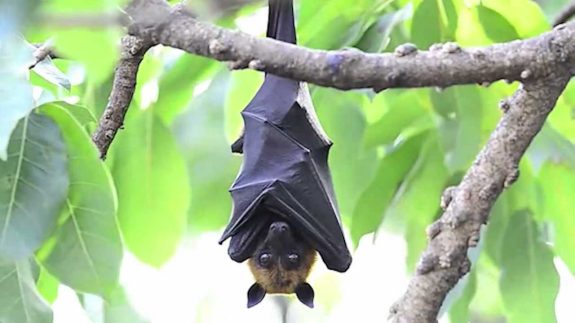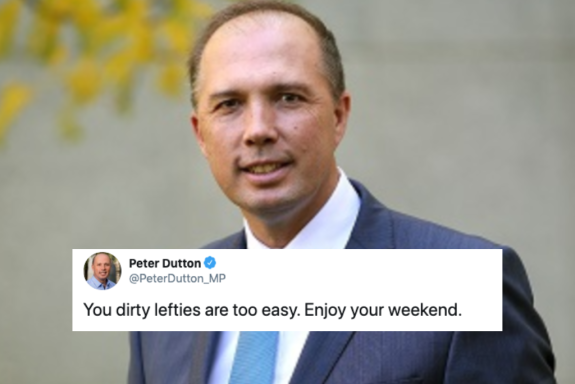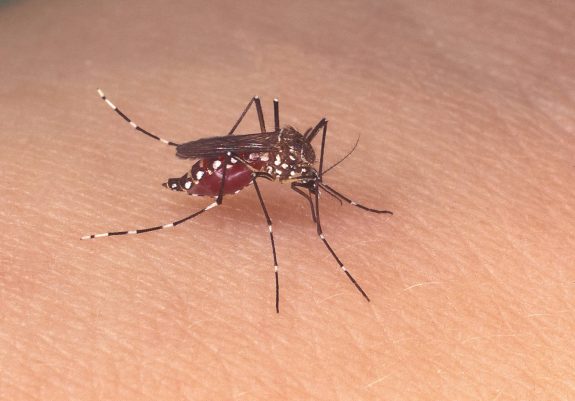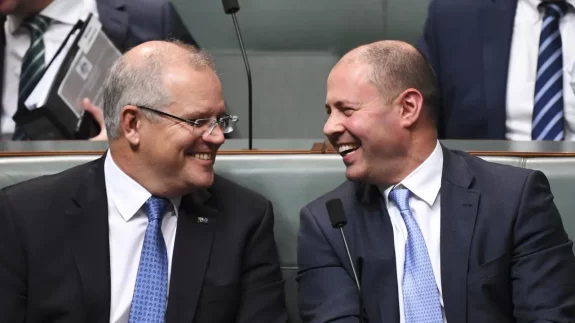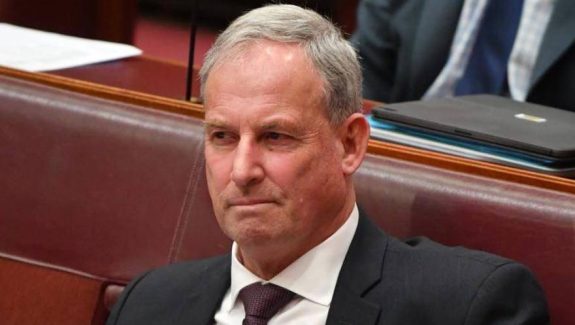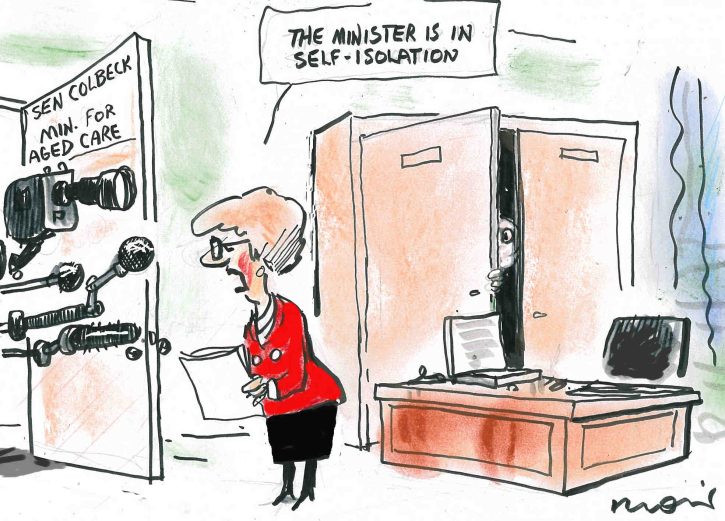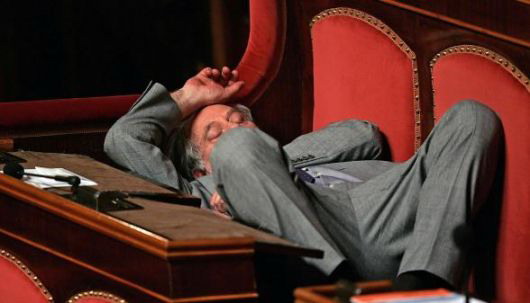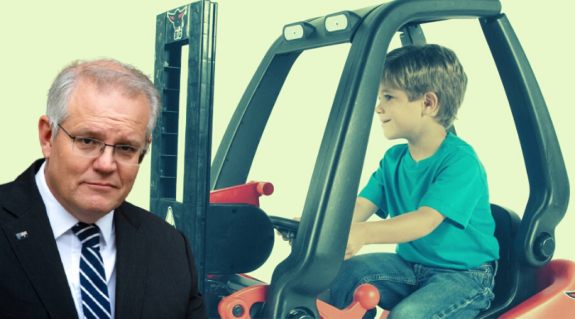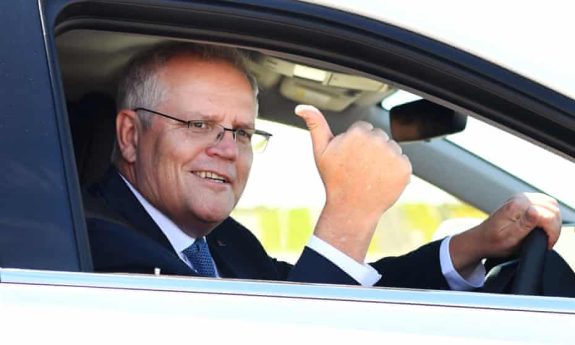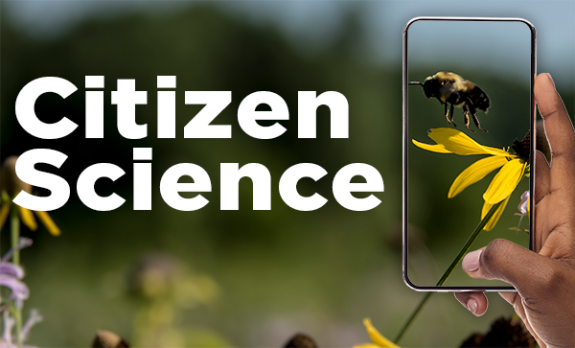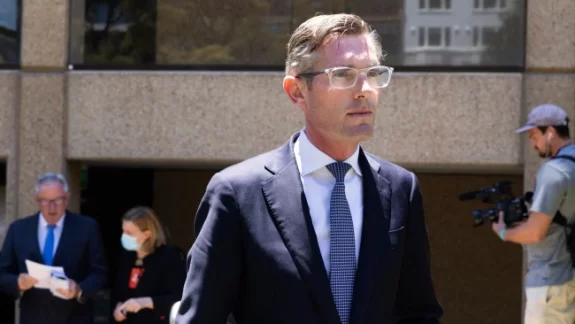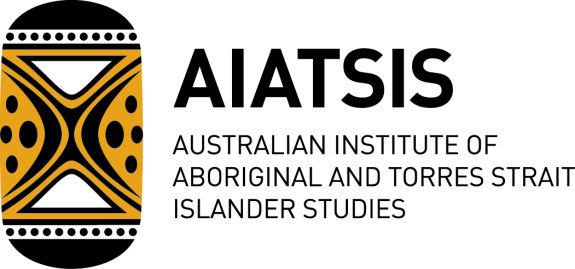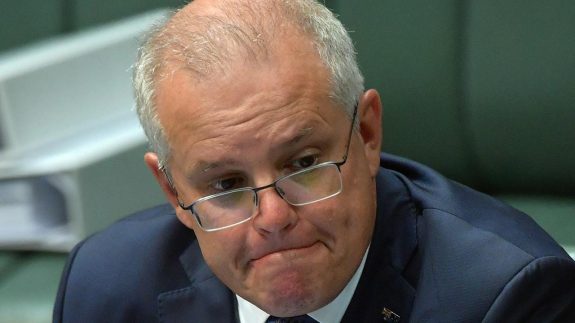By Denis Bright
When Australia was the land of hope, our best political leaders could inspire the electorate with occasional commitments to longer-term community welfare and peaceful international relations. The federation era prior to 1914 brought real debate about the best priorities for the new social market. Even during the wartime emergency, Curtin and later Chifley focused on post-war reconstruction. The Whitlam Government broke out of the sabre-rattling of the Cold War with new patronage for community development and more peaceful international relations to be re-endorsed in the Hawke-Keating era.
After the scourges of the Global Financial Crisis (GFC), the COVID-pandemic and the threats to humanity from global warning, the time is ripe for new policy positive paradigm changes. The COVID-crisis has provided opportunities to re-set the conventional policy buttons.
For senior federal LNP leaders in 2022, there is a back to the future plan for recovery from these multiple crises. This is the new era of a Return to Normalcy which was already fraying prior to the arrival of COVID. From the Wizard of Oz himself, commitments to a return to the normal are a regular feature of our prime minister’s media releases in the presence of the Chief Health Officer and of course General Frewin (PM’s Press Conference 5 January 2022):
So, if it’s not an essential test, you’re not a close contact, you’re not symptomatic, you shouldn’t be in those lines. In most cases, people in that situation don’t require a test at all and they should go to the beach, go with their family or be at work or wherever, whatever their normal course of business is. So, all states are moving away from that RAT test requirement for travel.
Alas, these are not normal times despite the PM’s daily assurances to viewers of nightly news services.
The next edition of Australian National Accounts for the December Quarter is due for release on 2 March 2022 with the March Quarter following on 1 June 2022.
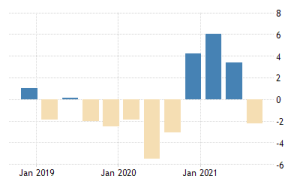
Percentage Quarterly Changes in Australian Private Capital Expenditure (Image from tradingeconomics.com)
During the worst months of the COVID-crisis, the Australian economy was kept going by Commonwealth fiscal stimulus programmes and higher deficit spending by the states and territories. This approach received largely bipartisan support from the federal Labor Opposition and at meetings of national cabinet.
The graph shows the effects of the federal stimulus packages on levels of Australian Private Capital Expenditure during the worst months of the COVID-crisis in 2021.
The value of a return to old ways as The New Normalcy might still triumph over federal LNP fear strategies about the dangers of paradigm changes in difficult times when householders are under great financial stresses from mortgage payments, high rents and uncertainty in longer-term employment trends in the midst of the usual domestic family tensions. Beyond the official unemployment rate for December 2021 of 4.2 percent with the addition of an underemployment rate of 6.6 per cent with a youth employment rate of 9.4 per cent. Expect to hear more of this magic 4.2 per cent punchline which is based on a definition of work as one hour within the business surveys conducted by ABS in the monthly survey week. Our LNP leaders intentionally do not explain the caveats.
How employment is measured: The one-hour rule (ABS Explanation)
Less than 50 people in the sample of 50,000 report they only work one hour. That works out to be 15,000 people out of around 12 million employed (or 0.1%) and movements in this number are not large enough to affect total employment.
The ABS defines people as ’employed’ if they work one hour or more in the reference week. The vast majority of part-time employed people work more than 15 hours.
The ‘one hour rule’ is used internationally and allows employment figures to be compared with other countries. It has been used in Australia since the Labour Force Survey began, enabling comparisons to be made over a long period of time.
The ABS also has a range of other measures, such as underemployment, that help to understand how many people are fully employed, and how many would like to be working more.
Public opinion has shifted against the excesses of unconvincing media appearances by LNP leaders.
Recent national polling trends have been communicated by William Bowe for Poll Bludger from Resolve Strategic Polling (18 January 2022):
The Coalition primary vote is down fully five points since the last poll in mid-November to 34%, with Labor up three to 35%, the Greens steady on 11% and One Nation steady on 3%. The pollster’s already high ratings for independents and “others” are up still further, by two points to 11% and one point to 6%. As ever, no two-party preferred result is provided, but applying 2019 preference flows produces a Labor lead of around 53-47.
However, Queensland is the aberrant state and shows an erosion of the primary votes for the two major parties by 12 per cent since the last Resolve Strategic Polling in mid-November 2021. This is highly significant as there are thirty federal electorates in Queensland and most are helped by the federal LNP.
The last federal election brought Wall to Wall Coverage for federal electorates across Queensland beyond the six Labor electorates along the Brisbane-Ipswich corridor. Even on this corridor, the LNP can balance the remaining Labor seats with LNP seats in Longman, Petrie, Brisbane, Bowman, Bonner and Ryan. State-wide in Queensland, the federal LNP currently holds twenty-three of Queensland’s seats. The remaining federal seat of Kennedy in North Queensland is held by the Katter Australia Party (KAP).
Shortfalls in federal government grants have been a real challenge to Palaszczuk Government.
For outer metropolitan urban growth areas like the Beaudesert Corridor in Brisbane South, the federal LNP’s concept of the 30 Minute City is a property developers’ delight to justify more investment in shopping centres, suburban offices or workshops and new housing estates.
In Australia, regional shopping centres like the Logan Hyperdome are social hubs with a huge food court, cinemas and a wide choice of retail outlets accessible from extensive carparks. Unlike other major corporate shopping centres, the Logan Hyperdome is managed by the Queensland Investment Corporation (QIC) operating as the QIC Logan Hyperdome Pty Ltd. This is a corporatized entity within the Queensland Government’s portfolio of investment properties within Australia and overseas.
Company Description: QIC LOGAN HYPERDOME PTY LTD is located in Brisbane, QUEENSLAND, Australia and is part of the Other Investment Pools and Funds Industry. QIC LOGAN HYPERDOME PTY LTD has 1,000 employees at this location and generates $6.68 million in sales (USD). (Employees figure is estimated, Sales figure is modelled). There are 119 companies in the QIC LOGAN HYPERDOME PTY LTD corporate family.
These favourable outcomes of the QIC’s use of the investment multiplier generated a welcome profit of $6.7 billion for the Queensland Government in 2020-21. This is 10 percent of the entire Queensland state revenue. This is a most welcome windfall at a time of austerity in the distribution of grants by the federal LNP. The Queensland Investment Corporation Act 1991 (s.2.6) uses its property portfolios to protect Queenslanders from the effects of austerity in the allocation of Commonwealth Grants which combine with GST revenues to generate more than half of the total revenue base of the Queensland Government. In Tasmania, over 60 percent of all state revenue is derived from these federal revenue sources.
The mainstream state investment funds and the national Future Fund could be supported by investment subsidiaries which are independent of the mainstream funds to specialise in the delivery of new infrastructure, public health and community development options from investments by the Australian and especially overseas corporate sectors for delivery through public-private partnership arrangements. All dividends at the discretion of the investment funds as with our own personal superannuation investments.
Use of the Future Fund to generate investment in affordable housing was canvassed in Anthony Albanese Budget Reply Speech (7 News 13 May 2021):
“Labor has pledged to build 30,000 social and affordable houses over five years through a $10 billion future fund if the party wins the next federal election.
Opposition Leader Anthony Albanese used Thursday’s budget reply speech to reveal his plans to create the kitty from borrowed money.
In its first five years, investment returns would build 20,000 social houses with 4000 allocated for women and children fleeing domestic violence, and older women on low incomes at risk of homelessness.”
Already US style trailer parks are on the rise in the outer suburbs as housing and rents become more unaffordable. Some caravan parks offer long-term caravan and cabin sites such as the Galaxy Caravan Park near the Pacific Highway at Tanah Merah.
Although seldom publicised in the mainstream media, trailer parks are a feature of the urban landscapes of the USA as shown by this waterfront site in San Diego (Image: De Anza Trailer Park):
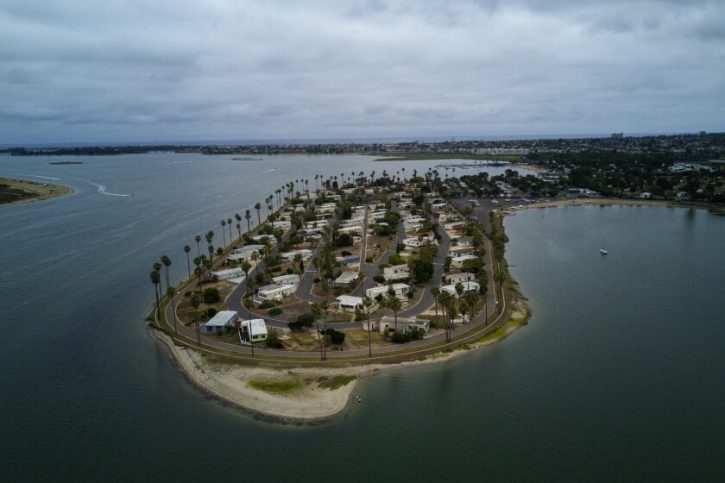
Waterfront Views from the De Anza Trailer Park in San Diego (Image from sandiegouniontribune.com : Photo by Nelvin C. Cepeda/The San Diego Union-Tribune)
The reality of trailer parks in neoliberal societies are of little concern to the LNP’s team of ministers and their assistants who help Barnaby Joyce as Minister for Infrastructure, Transport and Regional Development.
Minor far-right parties like Clive Palmer’s UAP are poised to assist in the re-election of the Morrison Government through the disciplined distribution of preferences in Outer Suburban Areas where financial stresses have frustrated the delivery of affordable housing dreams. In the Outer Brisbane South Electorate of Forde, the combined vote for One Nation, the UAP and Fraser Anning’s Conservative National Party approached 20 per cent of the primary vote and was highest in the most disadvantaged polling booths.
The alternative measures being offered by Barnaby Joyce’s ministerial networks are token measures like business studies of the possibilities of new transport infrastructure on the Beaudesert Corridor in Brisbane Outer South. The northern terminus of the much-publicised Inland Railway will be at Bromelton near Beaudesert in the LNP electorate of Wright where Scott Buchholz is Assistant Minister for Road Safety and Freight Transport.
Rail connections from Bromelton to the Port of Brisbane (approximately 80 kms) are not finalised. Freight not being by road from Bromelton may one day rattle through the southside suburbs of Brisbane. To raise the hopes of the southside electorates on the Beaudesert Corridor for suburban rail connections for this urban growth area, the federal government will be paying for half the token costs of a business study of this initiative.
Planning is now underway to confirm the need, timing and land requirements for a future rail line and services to support population, employment and economic growth in the south-west corridor of Queensland’s capital city region.
North of Brisbane, the proposed federally funded Sunshine Coast Railway is likely to be resurrected to assist in holding the LNP’s northside seats as leading property developers proceed to recycle wetlands and grazing land into new home sites at Aura.
The vast resources available to the Queensland Government through Forestry Plantations Queensland were sold off to the Hancock Timber Resources Group by a previous state government. The possibilities of using harvested pine plantations as affordable housing sites in the Sunshine Coast hinterland is no longer a policy option.
Alternative economic options are difficult to promote in more disadvantaged electorates where many residents are under siege from financial pressures of mortgage payments or high rentals. These stresses have generated a fair share of scepticism about national politics and the relevance of the old two-party divide in Australian politics.
Electorate profiling of constituents has become so intricate that political insiders in the federal LNP can exploit these financial and social tensions in Australian households to make use of the outrageous levels of opportunistic political communication from both federal LNP and minor far-right parties who are offering a disciplined distribution of preferences to the Morrison Government.
Due to the COVID-crisis, there will be paper trails to encouraging the use of postal and pre-polling voting are becoming mainstream mechanisms during the current COVID-crisis. In outer-suburban electorates, there is no long traditions of political participation to challenge the saturated levels of political communication from sitting members through strategic use of electorate allowances.
During my research for this article, I found little interest in political futures on Brisbane’s Outer Southside when I completed some light-hearted impromptu vox populis at shopping centres and bus stops. Many constituents detest formal political processes as opportunistic rhetoric. Only some more risk-taking about policy solutions can change this situation. The alternatives have to be very outstanding to gain attention and involve a degree of political risk-taking which brought Labor leaders close to power in 1961 in a shock result for the LNP and sent them off into Opposition in the Hawke-Keating and Rudd-Gillard eras.
 Denis Bright (pictured) is a financial member of the Media, Entertainment and Arts Alliance (MEAA). Denis is committed to consensus-building in these difficult times. Your feedback from readers advances the cause of citizens’ journalism. Full names are not required when making comments. However, a valid email must be submitted if you decide to hit the Replies Button.
Denis Bright (pictured) is a financial member of the Media, Entertainment and Arts Alliance (MEAA). Denis is committed to consensus-building in these difficult times. Your feedback from readers advances the cause of citizens’ journalism. Full names are not required when making comments. However, a valid email must be submitted if you decide to hit the Replies Button.
Like what we do at The AIMN?
You’ll like it even more knowing that your donation will help us to keep up the good fight.
Chuck in a few bucks and see just how far it goes!
Your contribution to help with the running costs of this site will be gratefully accepted.
You can donate through PayPal or credit card via the button below, or donate via bank transfer: BSB: 062500; A/c no: 10495969

